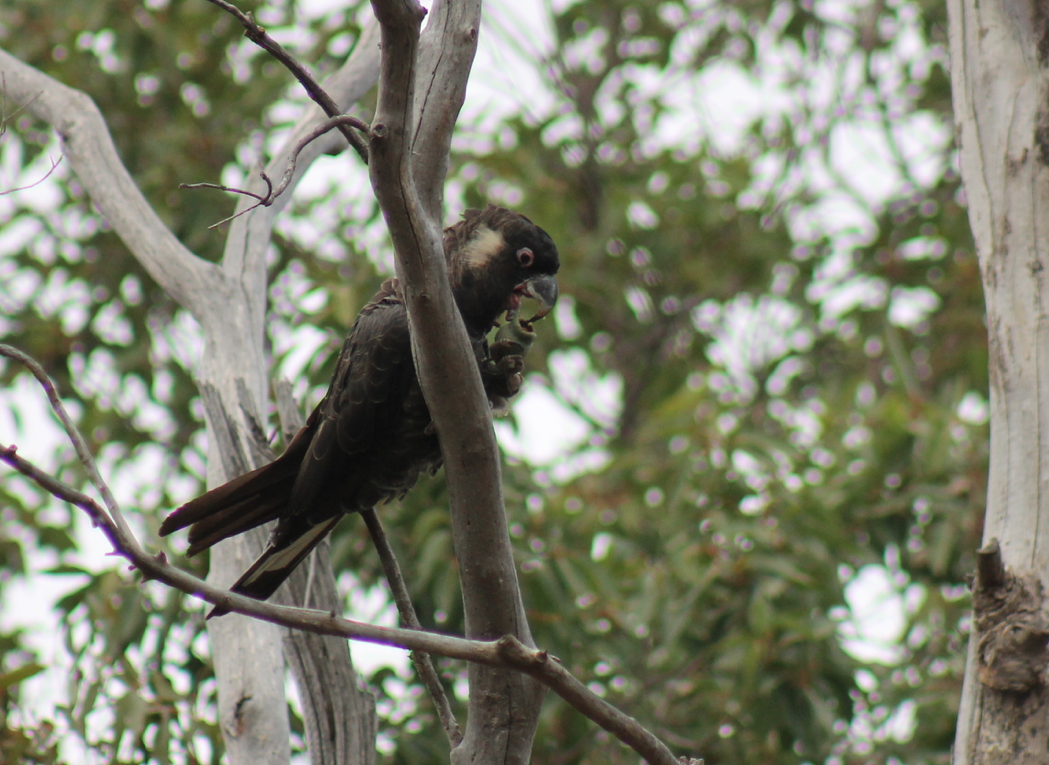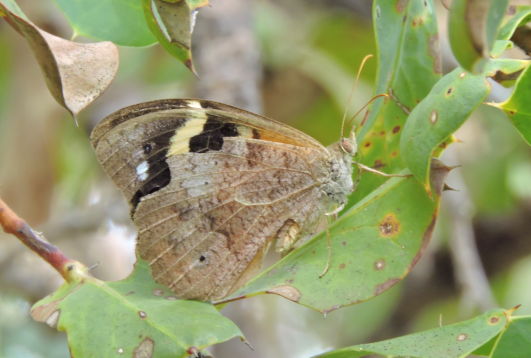Darling Range Branch
Eighteen enthusiastic naturalists joined the fourth survey of the bush block at Arbuthnot St, Kelmscott in April 2018. The visitors included two local families and the Deputy Principal of the nearby school, which was encouraging.
This bush is where the scarp and flats intersect. We are surveying it for each of the six Nyoongar seasons. This time it was Djeran or autumn, from April-May.
It was very dry with a noticeable absence of flowers, except for two local natives, Golden Wreath Wattle (Acacia saligna), and Eucalyptus wandoo, and a weed tree: Flinders Range Wattle (Acacia iteaphylla). This was in stark contrast to the 54 species we saw in October. There was, however, fresh Scarlet Bracket Fungus (Pycnoporus coccineus) on a fallen tree trunk.
We divided into three groups: one for bird watching led by Mike Green and June Butcher; an insect group led by John Abbott and Josette Loomes; and a flora group led by Tony and Joff Start. Of major interest to all of us was the tree with the mistletoe on it. When the flora group reached it they noticed the flowers were gone but seeds remained, and seeds had been stuck to the branches by Mistletoe Birds. Eric McCrum had given us a short talk on Mistletoe Birds at our last meeting and had shown us how they eat the seeds, digesting a significant amount of glucose from the sticky layer, which is still intact when the seed is pooped. Now we could feel how sticky the substance really was. At one point, there was a string of seeds hanging from a branch (below; R Green). The rest of us had not seen that before, and most of our visitors had never heard of Mistletoe Birds either. We thought it was a great find.

Later on, when all three groups met, June Butcher told us she had seen three Mistletoe Birds on the mistletoe. We were so envious! We quickly got out books to show the visitors what a Mistletoe Bird looked like and all promised to go back at another time to look for them.
Overall, we now have seen 31 birds across all surveys. We added three new ones this time: Baudin’s Black Cockatoo (Calyptorhynchus baudinii) (below, R Green) with its long beak, the Red-capped Parrot (Purpureicephalus spurius) and the Spotted Pardalote (Pardalotus punctatus). The only birds we’ve seen across all surveys have been the Red-tailed Black Cockatoo (Calyptorhynchus banksia) and the Silvereye (Zosterops lateralis).
 Several insects were seen, including many species of ants, some large grasshoppers and a Common Brown Butterfly (Heteronympha merope) (below, T Start).
Several insects were seen, including many species of ants, some large grasshoppers and a Common Brown Butterfly (Heteronympha merope) (below, T Start).

There were few reptiles and the only mammal was a Quenda (Isoodon obesulus fusciventer) which is making a regular appearance on our surveys.
If you’d like to see the observations we’ve made so far please go to our Project on the Atlas of Living Australia.
Our next survey date will be on Saturday June 23. Please join us and RSVP.
Rachel Green

